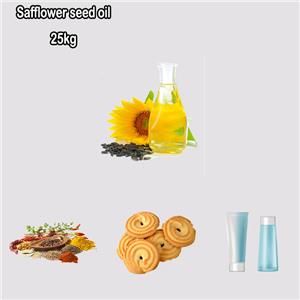
Product Details
| Product Name: Safflower seed oil | CAS No.: 8001-21-6 |
| EC-No.: 232-273-9 | Min. Order: 5kg |
| Purity: 68.8% | Supply Ability: 1000kg |
| Release date: 2025/10/24 |
Safflower seed oil is a vegetable oil extracted from the seeds of the Carthamus tinctorius plant, commonly known as the safflower. Despite the similar-sounding name, it's not related to saffron.
Here's a breakdown of its key characteristics and uses:
Two Main Types:
High-Linoleic Safflower Oil: This is the traditional form, rich in polyunsaturated fats (primarily omega-6 linoleic acid, often 70-80%+). It has a relatively low smoke point and is liquid even when refrigerated.
High-Oleic Safflower Oil: Developed more recently, this type is rich in monounsaturated fats (primarily oleic acid, similar to olive oil, often 70-80%+). It has a much higher smoke point and is more stable.
Appearance & Flavor:
Pale yellow to golden color.
Very mild, neutral flavor and odor, making it versatile as it doesn't overpower other ingredients.
Culinary Uses (Depend on Type):
High-Linoleic: Best for cold applications like salad dressings, dips, and drizzling. Its low smoke point makes it unsuitable for high-heat cooking. It's also used in margarine and shortening.
High-Oleic: Excellent for high-heat cooking methods like frying, sautéing, searing, and baking due to its high smoke point (often around 450°F / 232°C or higher). Its neutral flavor works well in all kinds of dishes.
Nutritional & Potential Health Benefits:
High-Linoleic: Studies suggest replacing saturated fats with polyunsaturated fats like linoleic acid may help lower LDL ("bad") cholesterol. However, excessive omega-6 intake without balancing omega-3s is a concern for inflammation.
High-Oleic: Rich in monounsaturated fats, which are consistently linked to heart health benefits (improving cholesterol profiles, reducing inflammation) similar to olive oil.
Source of Vitamin E: A potent antioxidant important for immune function and skin health.
Heart Health (Potential):
Blood Sugar Management (Preliminary Evidence): Some studies suggest it might help improve insulin sensitivity, but more research is needed.
Skin Health: Often used topically (see below).
Important Note: While it contains healthy fats and vitamin E, it lacks significant amounts of other vitamins, minerals, or protein. It's a source of calories (like all fats: ~120 cal/tbsp).
Topical/Skincare Uses:
Moisturizing: Easily absorbed, non-greasy, and lightweight. Helps hydrate skin without clogging pores (generally considered non-comedogenic).
Soothing: Can help calm irritated or inflamed skin.
Massage Oil: Its light texture and glide make it a popular base for massage oils.
Carrier Oil: Used to dilute essential oils for safe topical application.
Hair Care: Sometimes used to condition hair and scalp.
Industrial Uses: Historically and currently used in some paints, varnishes, and other industrial products due to its drying properties (especially the high-linoleic type).
Key Considerations:
Omega-6 Balance: High-linoleic oil is very rich in omega-6 fatty acids. While essential, the modern Western diet often has an imbalance skewed heavily towards omega-6s compared to omega-3s. Excessive omega-6 intake without sufficient omega-3s may promote inflammation. Moderation and balancing with omega-3 sources (fatty fish, flaxseeds, walnuts) is important.
Smoke Point Matters: Always choose the type (high-linoleic vs. high-oleic) appropriate for your cooking method to avoid harmful compounds and unpleasant flavors from overheating.
Storage: Like all oils, store in a cool, dark place. High-linoleic oil is particularly prone to oxidation/rancidity due to its polyunsaturated fat content. High-oleic oil is more stable.
Not Saffron: It provides no flavor or color resembling expensive saffron.
In summary: Safflower seed oil is a versatile, neutral-flavored oil available in two main types. High-oleic is prized for high-heat cooking and monounsaturated fats, while high-linoleic is used in dressings and topically for skin. It offers potential health benefits primarily through its fat profile and vitamin E content, but be mindful of omega-6 balance with the high-linoleic type.

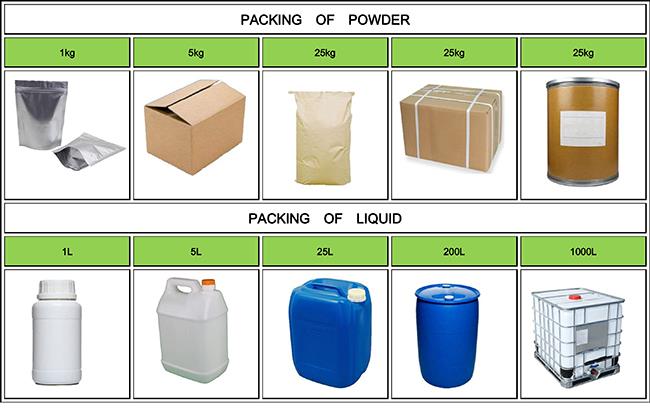

Company Profile Introduction
You may like
Recommended supplier
| Product name | Price | Suppliers | Update time | |
|---|---|---|---|---|
| $/ |
VIP5Y
|
RongNa Biotechnology Co.,Ltd
|
2025-04-29 | |
| $200.00/180TON |
Molokomalapatrading Ltd.
|
2022-07-27 | ||
| $0.00/1kg |
Hebei baicao biology science and technology co., ltd
|
2022-05-09 | ||
| $20.00/25Kg/Drum |
Hebei Aicrowe Biotech Co., Ltd
|
2019-05-20 |
- Since: 2006-04-03
- Address: Room 2015, No.2 Building Kaixin Mansion, No.107 Jinqiao Ave, Wuhan, China
+8613986145403
info@fortunachem.com



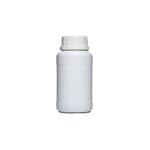
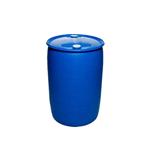


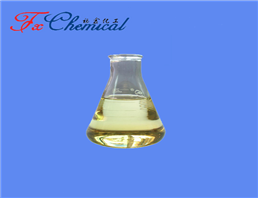
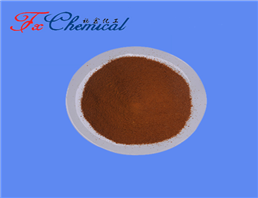
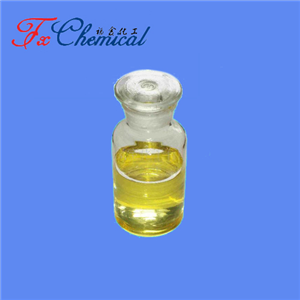

 China
China